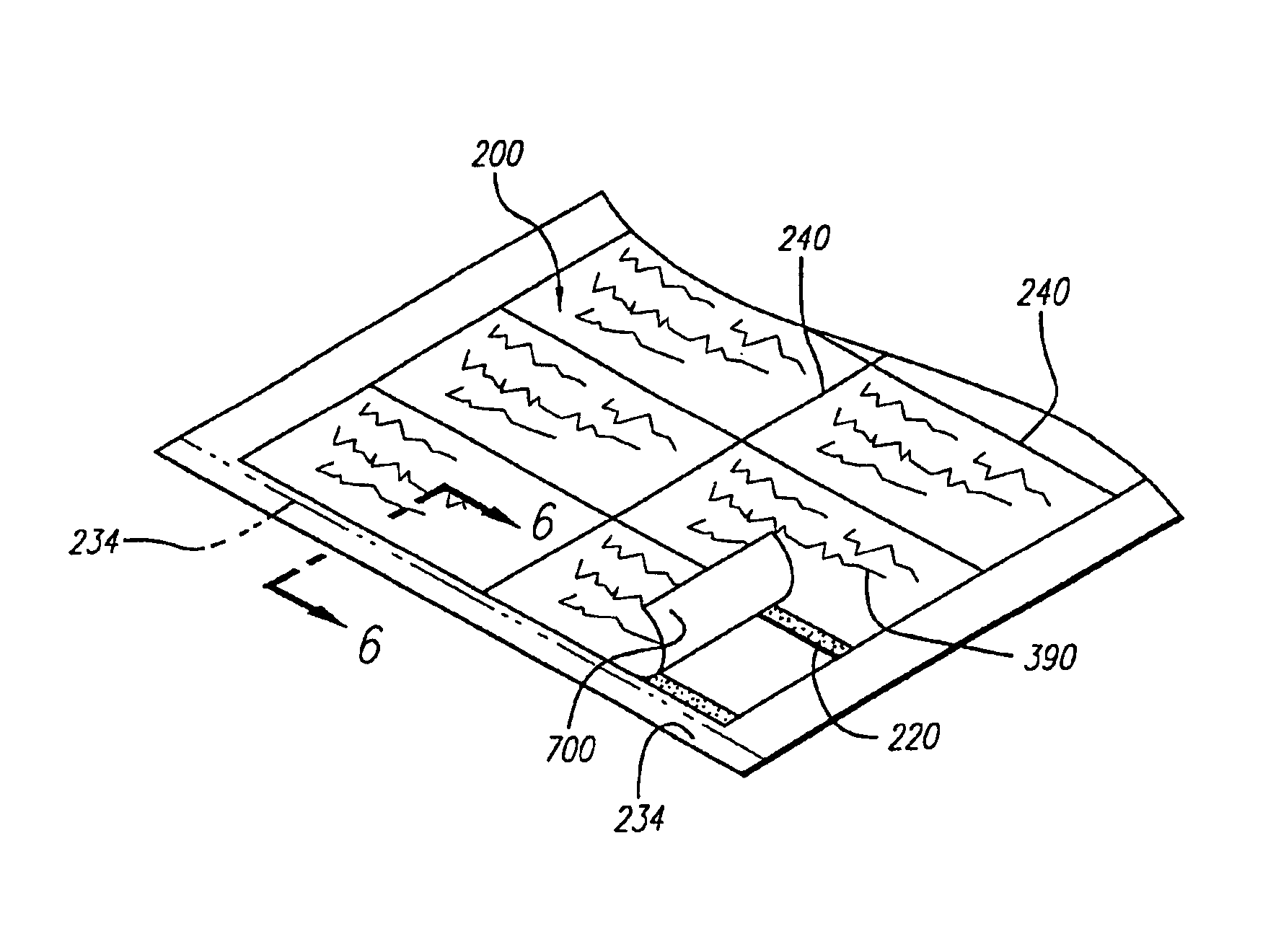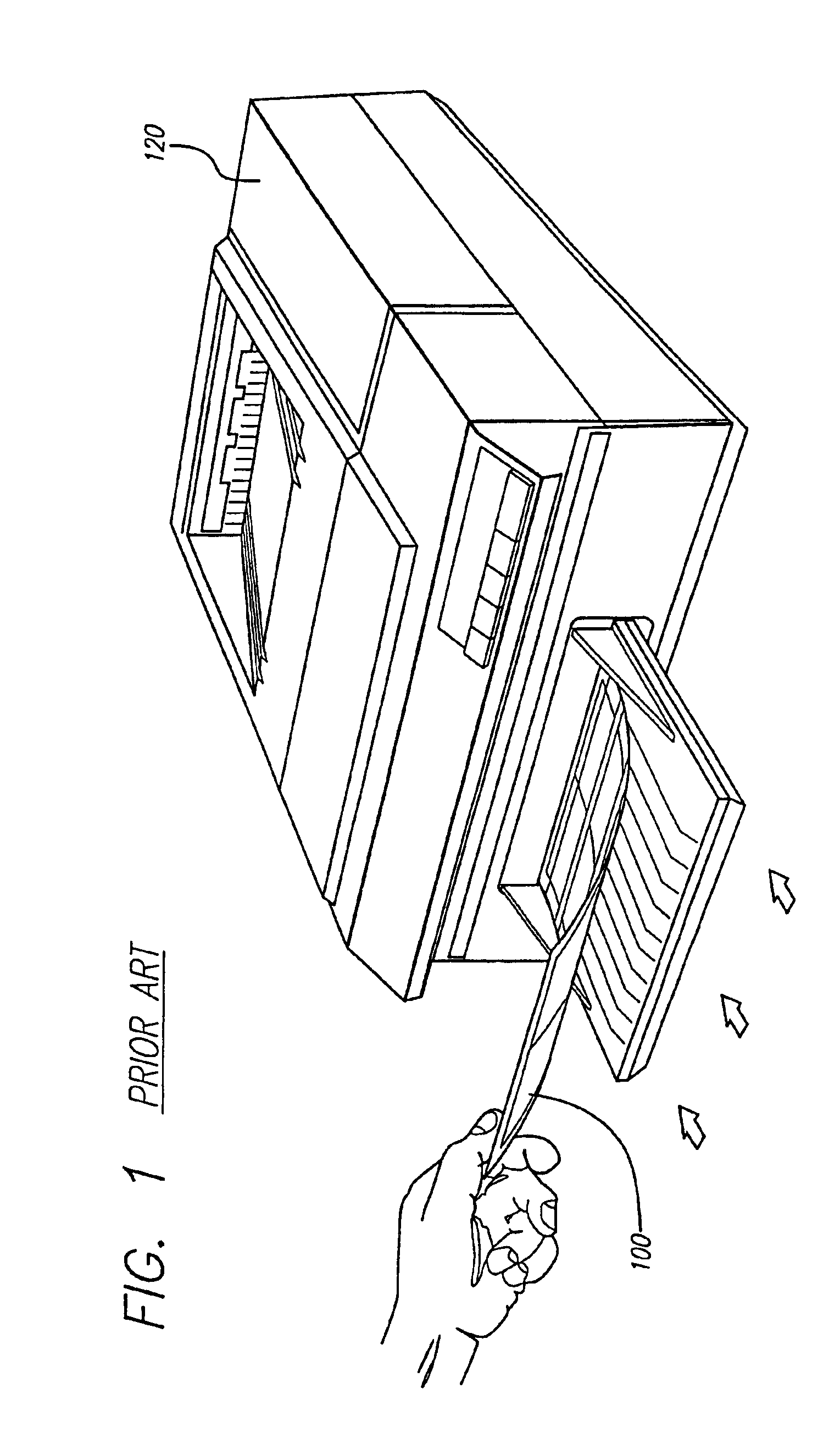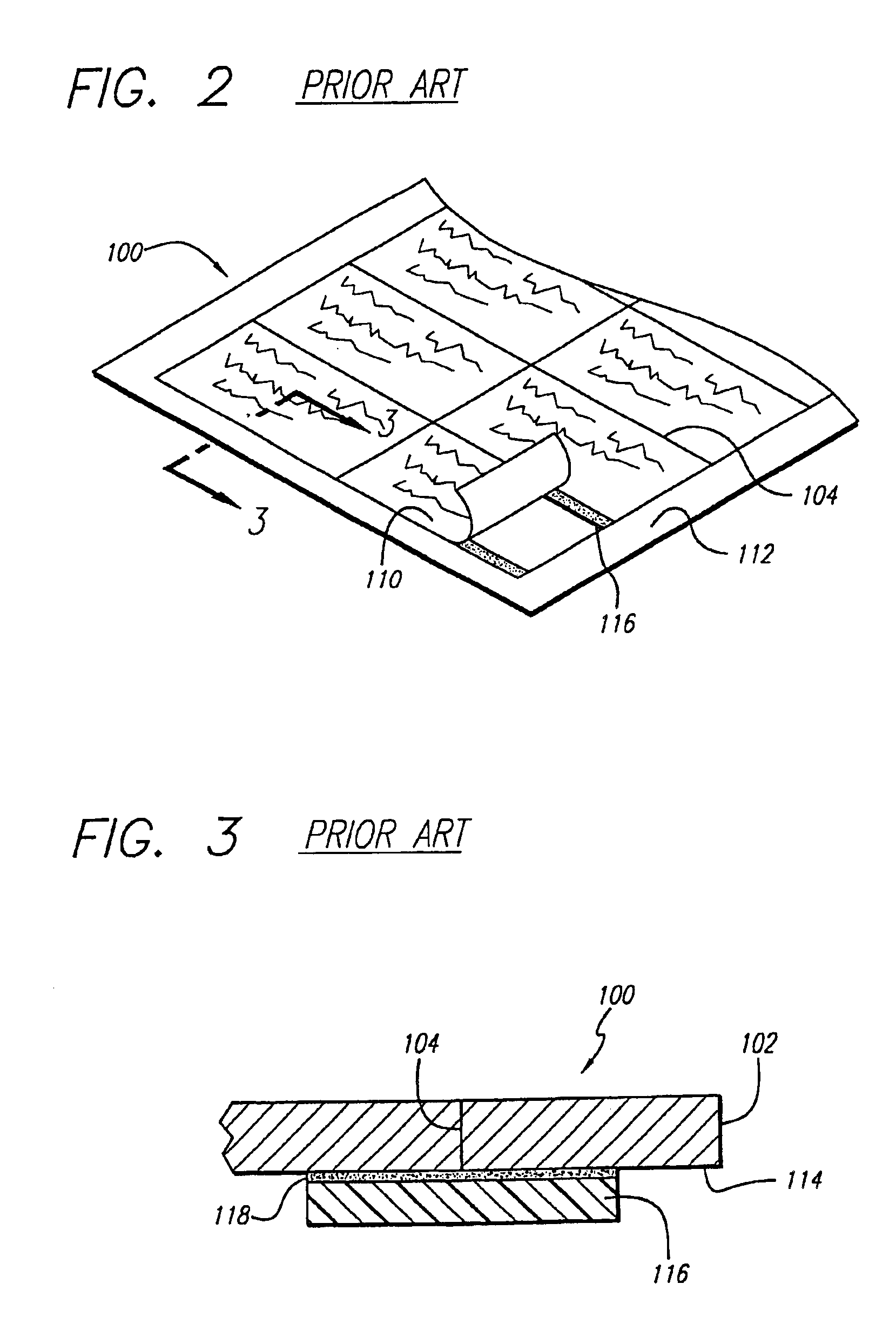Method of forming sheets of printable media
a printing media and printing technology, applied in the field of printing sheet construction, can solve the problems of inflexible, high cost and time consumption of separate cutting steps, and the need to be made from relatively thick and heavy paper, and achieve the effect of reducing the amount of memory curl
- Summary
- Abstract
- Description
- Claims
- Application Information
AI Technical Summary
Benefits of technology
Problems solved by technology
Method used
Image
Examples
Embodiment Construction
[0052]A number of different embodiments and manufacturing processes of the dry laminated business card sheet constructions of this invention are illustrated in the drawings and described in detail herein. A representative or first sheet construction is illustrated generally at 200 in FIGS. 5, 6 and 7, for example.
[0053]Referring to FIG. 4, sheet construction 200 is formed by extrusion coating a low density polyethylene (LDPE) layer 204 onto a densified bleached kraft paper liner sheet (or base paper or base material) 208, which is not siliconized. The thin extrusion-cast LDPE layer 204 is unoriented. A suitable liner sheet 208 with layer 204 is available from Schoeller Technical Papers of Pulaski, N.Y. The extrusion-coated liner sheet is laminated to a facestock sheet (or card stock) 212 using a layer of hot melt pressure sensitive adhesive (PSA) 216. The facestock sheet 212, the adhesive layer 216 and the film 204 form a laminate facestock 220. The facestock sheet 212 can be curren...
PUM
| Property | Measurement | Unit |
|---|---|---|
| thickness | aaaaa | aaaaa |
| thickness | aaaaa | aaaaa |
| thicknesses | aaaaa | aaaaa |
Abstract
Description
Claims
Application Information
 Login to View More
Login to View More - R&D
- Intellectual Property
- Life Sciences
- Materials
- Tech Scout
- Unparalleled Data Quality
- Higher Quality Content
- 60% Fewer Hallucinations
Browse by: Latest US Patents, China's latest patents, Technical Efficacy Thesaurus, Application Domain, Technology Topic, Popular Technical Reports.
© 2025 PatSnap. All rights reserved.Legal|Privacy policy|Modern Slavery Act Transparency Statement|Sitemap|About US| Contact US: help@patsnap.com



